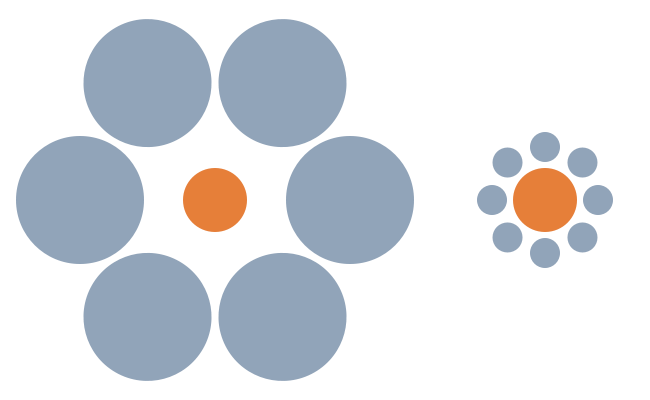# Decoy Choices
According to standard economic theory, the ultimate goal when deciding between two options is the choice that brings the greatest UtilityThe state of being useful, profitable, or beneficial. A rational human looks at their options, judges each on its merits, and then calculates the expected level of gained utility, which makes intuitive sense.
However, behavioral economics says it is not so simple. In reality human beings do not compare things in absolute terms, but in relative terms.

Humans rarely choose things in absolute terms. We don’t have an internal value meter that tells us how much things are worth. Rather, we focus on the relative advantage of one thing over another, and estimate value accordingly. – Dan Ariely
Humans focus on comparing things in a relative way, but we also tend to fixate on comparing things in the easiest way possible, while doing our damnedest to avoid difficult comparisons.
If I want to sell you a [Hoojaz] for five dollars, chances are you have no idea if that is a good deal. Is a [Hoojaz] really worth five dollars? How can you know. Imagine instead that I offer you a [Hoojaz + Whatsit] for six dollars?
I have given you a relative comparison. Before, you had no idea if a [Hoojaz] was worth it, but now you can’t stop thinking about what a steal it would be to get a [Hoojaz] AND a [Whatsit] for almost the same price.
# When to use
- You want to guide the player into a particular choice, but you don't want to force them.
- You are dynamically generating options for the player, and you are looking for a consideration on how to mutate the output to benefit the player.
# When not to use
- On every single choice the player needs to make.
# An Example
Let’s say I have given you the choice between these two pieces of gear:


Option [A], a sword that does an average of 7.5 damage per second, and Option [B], a piece of armor with a defense of 10. Which is better? Which do you choose?
What you have here is a choice between two things that excel in comparatively different categories; and human beings, unfortunately, are rubbish at comparing things like this. What we need is a way to give your brain a rest; to give it something to compare “easily”. Look what happens when I introduce a third option.

I have now introduced a third option, [A-]. Its name, obviously, gives you a bias, but you can hopefully feel the effect this has had on you. Your brain now has something to easily compare.
Even though it is totally irrational, put most people in this situation and they will now choose option A. You can do this with almost anything, and its called “using a decoy”. By introducing a less than optimal option, that is easily comparable, you can nudge people into the option that you want them to make, while still providing an option B for the min-maxers out there.
Let’s look at another real world application.
Have you ever played an RPG where you got to a boss that spams a status effect attack, say poison, and all you can think to yourself is, "Damnit! There was an item back in town that makes me immune to this.”
Been there, done that... but let’s rewind.
Back in town you enter the item store, and you are presented with three items:
- [20g] Ring of the Snake: immune to poisons
- [25g] Ring of the Glorious Snake: immune to poison, +20 health.
- [20g] Ring of the Gorgon: immune to petrification
What’s better, immunity to poisons or immunity to petrification?
Debatable, and if the player already has an item that makes them immune to poison, that’s fine, but we (the designers) want to make sure that you have something for this boss fight. And, this is the important bit, we want to do it without forcing the option down your throat. By introducing this third item, and making sure we price it comparatively low, we can nudge people into purchasing an item of poison immunity without them even knowing it.